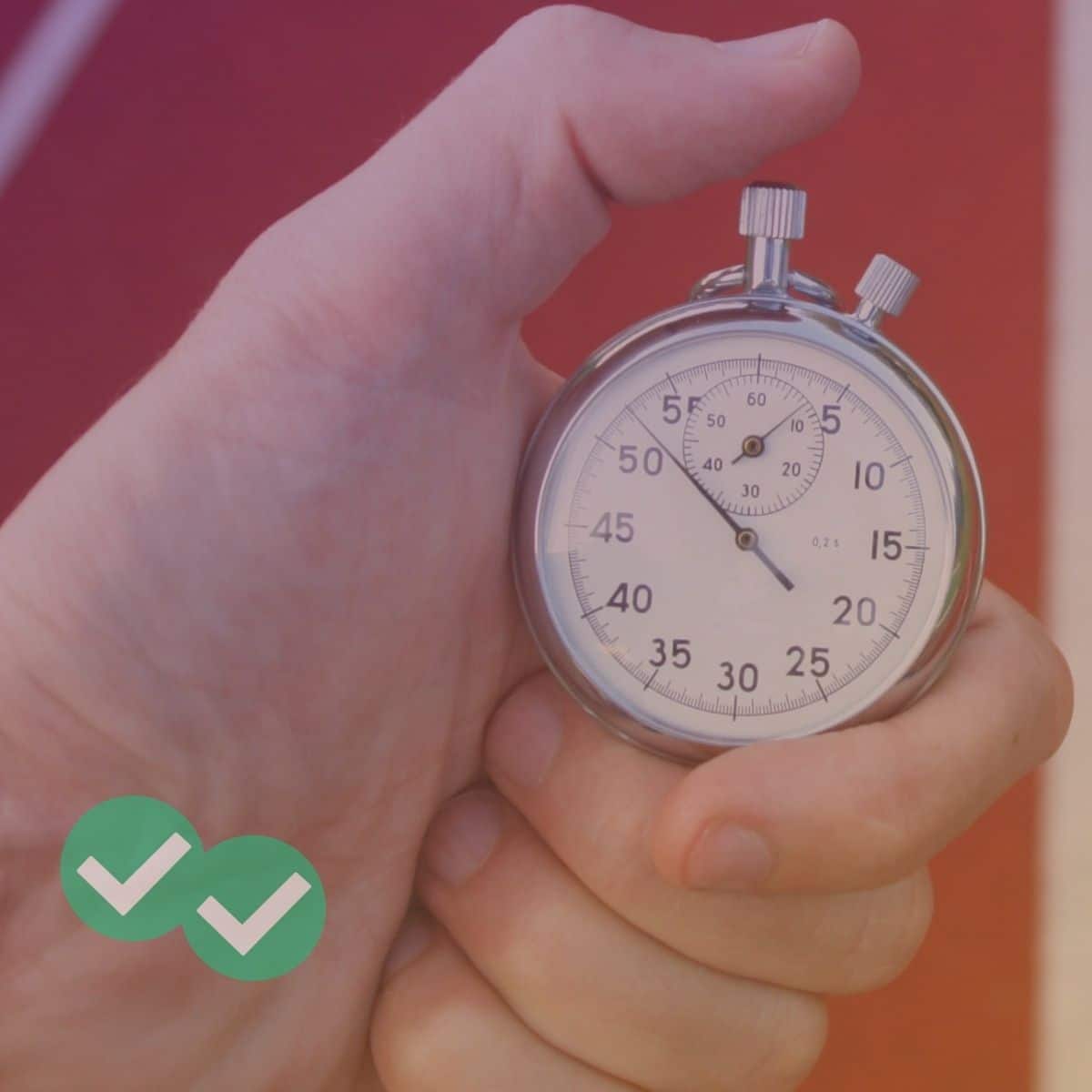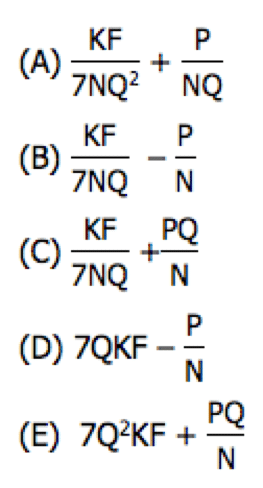
Enter Your Email to Start Your Free GMAT Practice Test:
Kicking off your GMAT prep to get into business school? Or wanting to assess your test-day readiness? What better way than to take a free GMAT practice test that’s designed to emulate the real deal! Try out all 64 questions in an interface that provides an authentic preview of the GMAT experience.
At the end of your online mock test, you’ll receive an estimated score for each of the 3 sections—Quant, Verbal, and Data Insights—along with your overall scaled score. You’ll also receive a breakdown of your strengths and weaknesses by question type, so you can focus on the areas that matter most.
Plus, with video and text explanations for every question, you’ll have all the resources you need to review and improve your performance.
Ready to see where you stand? Dive into Magoosh’s free GMAT practice test today!
Practice Test Options
On the practice test start page, you’ll be able to select from these choices:
| Format | Sections | Questions | Time |
|---|---|---|---|
| Full-Length Exam | 3 | 21 Quant 23 Verbal 20 Data Insights |
2 hours and 15 min |
| Single-Section Test | 1 | 21 Quant, 23 Verbal, or 20 Data Insights | 45 minutes |
For the best experience and most accurate GMAT practice score estimate, we do recommend that you take the full mock test if you can. But if you’re short on time, feel free to practice just a single section of the exam.
Alternatively, head over here to take our GMAT Diagnostic Quiz to get a feel for each of the sections and their question types. That quiz is 20 total questions—roughly 7 from each section—in 45 minutes.
Table of Contents
- What to Expect on the Full GMAT Practice Test
- Is the Actual GMAT Harder than the GMAT Practice Test?
- When Should I Take a GMAT Mock Test?
- How Do I Best Simulate Test Day?
- Next Steps after Taking the Free GMAT Practice Test
- Official GMAT Practice Tests
What to Expect on the Full GMAT Practice Test
Test Structure and Features
Test Structure
First, a quick note that the GMAT became shorter in late 2023 with the launch of the Focus Edition, so our GMAT sample test matches that exam pattern:
- Quant — 21 questions in 45 minutes
- Verbal — 23 questions in 45 minutes
- Data Insights — 20 questions in 45 minutes
You will also have an optional 10-minute break—which we recommend you take!—after either the 1st or 2nd section. Including this break, you should set aside roughly 2 hours and 30 minutes to take the full mock test.
Note that our free practice test presents the three sections in the order you see above. However, for other practice tests on Magoosh, you’re able to select the order of the sections that you’ll see, just like with the real GMAT.
By the way, if you’re brand new to the test, we recommend first taking a look at our article What is the GMAT?
Question Adaptive
Within a section, the difficulty of questions will adapt based on your performance. That means that if you answer consecutive questions correctly, the next questions will be harder. Likewise, getting questions wrong will decrease the difficulty of subsequent questions.
In other words, the GMAT does not have a fixed, predetermined set of questions when you start a section. This is unlike most other exams (such as the GRE).
Magoosh’s GMAT practice exam is question adaptive as well. Therefore, be sure to keep your pacing strategies in mind as you work through the mock test. If a question is too hard, you’ll need to guess and move on. Then, at the end of the section, you may have a chance to revisit the question if you still have time on the clock.
- Also, check out our free lesson on Pacing, Skipping, and Guessing for the GMAT.
Test Interface
The GMAT is also unique compared to other exams in that you can’t jump ahead to later questions and you can’t go back to earlier questions. Whereas other tests will let you see every question right from the start, you have to answer each question one at a time on the GMAT.
The exception to this comes at the very end of a section. If you have time remaining, a Question Review screen will appear that enables you to view any previous question. You are allowed to change up to 3 of your previous answers if you so choose.
So, as you work through the GMAT practice test, take advantage of the bookmark feature to flag any question you’d like to return to later. Then, jump right back to it from the Question Review screen to revisit your answer.
GMAT Quant Section
The problems on the Quant Section will look similar to what you’ve seen on other standardized tests. For a preview of the kinds of problems that you’ll solve on this section, check out our article on the math section.
Question Types
All of the questions in the Quant section are multiple choice. Given a set of 5 answer choices, you must select only one as the correct answer.
This section consists of Problem Solving questions, of which there are two main categories: Real Context and Pure Context. Real Context questions are basically word problems whereas Pure Context questions are just numbers and equations.
Math Subjects
As far as the math topics that appear on the Quant section, the GMAT primarily tests algebra and arithmetic. The GMAT does not test geometry (whereas the GRE does).
Lastly, on the Quant section, you cannot use a calculator. While that may be unnerving, it’s also telling about the types of questions that are asked. The GMAT is much more concerned with how you analyze and reason through problems than with how well you crunch numbers.
GMAT Verbal Section
The GMAT Verbal section consists of all multiple-choice questions as well, split into two main categories: Reading Comprehension and Critical Reasoning.
Reading Comprehension
You’ll first read a passage that’s anywhere from one hundred to several hundred words long. You’ll then answer a set of 2, 3, or 4 questions related to the passage. The exact types of questions asked vary. For example, you may need to identify the main idea, draw an inference, or state the function of a given portion of the passage.
Head here for more detail on each of the Reading Comprehension types and to sample some before jumping into the free practice test.
Critical Reasoning
Critical Reasoning questions ask you to analyze a short argument (typically fewer than a hundred words). You’ll then most often need to select an answer choice that weakens or strengthens that argument.
However, there are many types of CR questions. For a full discussion as well as sample questions, check out our Intro to Critical Reasoning article.
GMAT Data Insights Section
All of the unique-to-the-GMAT questions live in the Data Insights section. They fall under two main categories: Data Sufficiency and Integrated Reasoning.
Data Sufficiency
Roughly one-third of the DI section, Data Sufficiency questions ask you not to solve a problem but rather determine if it can be solved. Based on two provided statements, you must determine whether those statements are individually or collectively (or not at all) enough to find a solution.
Integrated Reasoning
The Integrated Reasoning category encompasses a wide range of question types. They largely ask you to evaluate and/or synthesize information from various sources such as graphs, tables, charts, or even paragraphs. Interestingly, some Data Insights questions might even be considered more like Verbal questions than Quant questions.
For examples of each question type, check out our Guide to Data Insights.
Lastly, yes, you can use a calculator on the Data Insights section.
When Should I Take a GMAT Mock Test?
Taking GMAT mock tests at the right times can make a huge difference in your prep journey. Here’s when (and why) you should work practice tests into your study plan:
At the Very Beginning of Your Prep
If you’re just starting out, it’s natural to wonder: Should I take a full practice test now, even if I haven’t studied yet? The answer is yes! Taking a practice exam early gives you a valuable baseline. You’ll get a clear sense of:
- Your starting score
- Which sections feel easier or harder
- How the test feels in terms of timing and stamina
Even if your first score isn’t where you want it to be (and it probably won’t be—that’s okay!), you’ll gain valuable data on where to go from here in your studies.
In the Middle of Your Studies
Once you’re a few weeks into your GMAT prep, practice tests become even more important. At this stage, they help you:
- Practice your pacing (arguably one of the trickiest parts of the GMAT!)
- Build test-day endurance
- Identify new weaknesses or skills that need sharpening
- Track how your score is progressing
Try to schedule a full mock test about every 2–3 weeks during your prep. And treat it like the real thing: quiet environment, timed sections, no pausing.
How Do I Best Simulate Test Day?
Taking practice tests is important—but how you take them matters just as much. To get the full benefit, you want to simulate real test day conditions as closely as possible. Here’s how to do it:
1. Create a Distraction-Free Environment
You want to find a quiet spot where you won’t be interrupted. Additionally, on test day, you’ll be in a proctored environment—whether at home or at a test center—with strict rules, so it’s best to:
- Silence your phone and any notifications
- Let others know you’ll be unavailable during your test window
- Avoid checking notes, grabbing snacks, or anything not allowed during real testing
Ultimately, the goal is to practice staying focused for the full duration of the exam.
2. Use the Same Materials You’ll Have on Test Day
You might be tempted to jot down some notes with a pen and paper on the Verbal section or even reach for a physical calculator on the Math section. However, you won’t have any of those on test day. Instead, the GMAT has very strict rules for what you can use during the test.
At a test center, any notes you take will be on a laminated page with a dry erase markers. Similarly, if you’re taking the exam online at home, you’re only allowed to write either on a physical whiteboard with a dry erase marker or the built-in, digital whiteboard. (See our article on taking the GMAT online for more information.)
Additionally, no physical calculators allowed. Instead, you can only use the built-in calculator—and only on the Data Insights section.
Getting used to these tools ahead of time will help you feel much more comfortable during the real exam.
3. Timing and Accommodations
On test day, you can’t do the Math section, go out to eat (unfortunately!), and then come back and do Data Insights. Thus, it’s best to take this practice test in one sitting. Keep in mind that you only have that one optional 10-minute break to use after one of the sections concludes.
With that said, GMAC (the makers of the GMAT) allows for certain accommodations if you meet certain criteria and apply ahead of time. See GMAT Accommodations: GMAT Extended Time and More for all the details.
You can take the free Magoosh practice test with extra time by adjusting the settings of your profile before answering any test questions (see the article above for step-by-step screenshots):
- Your sample practice test will begin on a “section start” screen.
- In a new tab, go to your Edit Profile page
- Select the amount of extra time and click the Update Profile button to save
- Refresh your other tab and then start the first section
Is the Actual GMAT Harder than the GMAT Practice Test?
The answer isn’t straightforward—there are several factors at play, and much of it depends on your preparation and mindset.
Exam Content
The types of questions you’ll see on test day will mirror those on your practice test. However, given that the GMAT is question adaptive, the difficulty of those questions will fluctuate depending on how you perform. If you do really well on test day vs. your practice exam, you might encounter more hard questions than you were expecting. (And that’s a good thing!)
Ultimately, every GMAT exam can feel different depending on the specific mix of questions you receive. You might encounter a Data Insights section with more Data Sufficiency questions than average that pushes you to your limits. Alternatively, the Verbal section could feature several Critical Reasoning questions that align with your strengths, making that part of the test feel more manageable.
So, whether practice test or actual exam, the difficulty of the GMAT—and the perception of it—varies considerably.
Exam Experience
Beyond content, test day brings a unique set of challenges. The stakes are higher, which can amplify anxiety and make the exam feel tougher than any practice test. For many, the pressure of knowing that this is “the real deal” can lead to second-guessing and hesitation, which might not happen in a lower-stakes practice setting.
However, this doesn’t mean the GMAT is inherently harder on test day. In fact, some test-takers find that the adrenaline boost helps them focus better. The key is to train under conditions that mimic the actual exam as closely as possible. When you take practice tests, do them timed, keep distractions minimized, and even start them at the same time of day as your scheduled exam. Building this level of familiarity can help quiet down those test-day nerves.
For more thoughts on the difficulty of the exam in general, see How Hard is the GMAT?
Next Steps after Taking the Free GMAT Practice Test
First of all, congrats on completing the GMAT Focus practice test! But that’s just one stage in your journey, so let’s take a look at some important next steps.
1) Assess your practice test score in light of your goals
Every journey needs a destination, so if you don’t have a target GMAT score yet, now is the time to pick one. A goal score will not only help you plan but also help you stay motivated along the way. Take your practice test result score and compare it against the GMAT scores of top MBA programs that you might be interested in.
Curious how improving on certain sections could increase your overall total score? Explore our GMAT Score Chart to see that impact. Also, read up on GMAT Percentiles to better understand your score in context.
By the way, did you know that you can also take the GRE for business school? Magoosh has a free online practice test for the GRE, too.
2) Follow a study schedule
To further stay on track, we highly recommend picking a study schedule that suits your admissions timeline, bandwidth for studying, and your strengths/weaknesses. Take a look at all of Magoosh’s study schedules here, ranging from 1 month all the way up to 6 months.
Not sure how long to study for? See our article on timelines for the GMAT.
3) Study the explanations to your GMAT mock test
Something even more valuable than your practice test score is the data you can mine from your wrong answers. In fact, one of the best things you can do in your studies is to keep an error log. The better you understand why you missed a question, the better you can tackle similar questions in the future. Thus, be sure to review all the explanations on the test you just took!
Official GMAT Practice Tests
Taking one GMAT practice test is great, but you’ll want to take more than one over the course of your studies.
In particular, make sure you take advantage of the two free practice exams offered by GMAC. These exams, along with some additional sample questions, can be found in the GMAT Official Starter Kit.
Since these are official exams, they’re the most authentic adaptive GMAT practice tests you can take. And because of that, we suggest setting these aside until later on in your studies. That way, after having improved upon your weaknesses, you’ll have the most accurate prediction available to assess how you’ll do on your upcoming test day.
Closing Thoughts
Practice tests are an essential part of studying for the GMAT, whether you are just starting out, are in the midst of your studies, or are nearing the finish line. We hope this free test is but just one you take along the way!
For even more mock tests, as well as video lessons teaching all the content and strategies you need for the GMAT, take a look at a Magoosh GMAT Premium plan. Happy studying!




